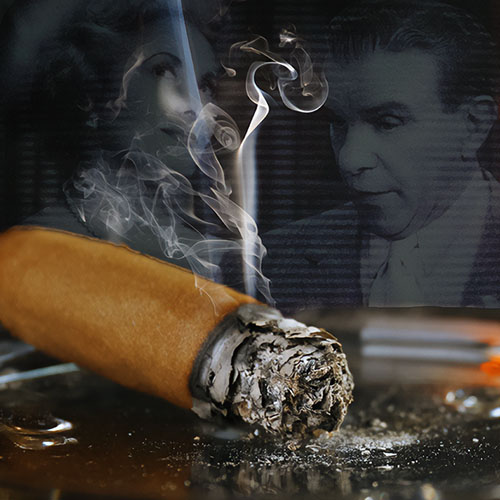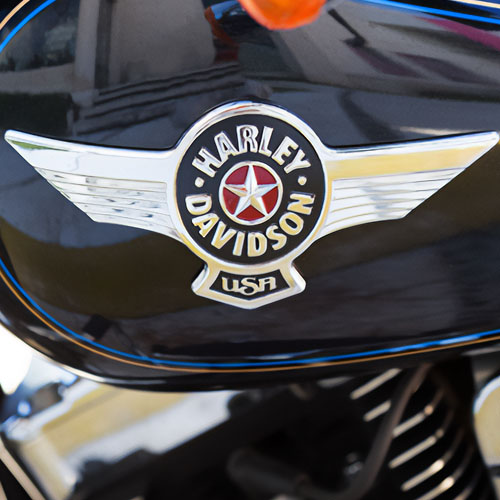The unimaginable crushing weight of a skyscraper stands in equilibrium with the muscle of the earth itself, and together they tremble, pushing against each other like the motionless wrestling of equal Titans. The old timers used to say that one man would be killed for every million dollars spent. But costs went up, and the modern equivalent became “One man for every seven stories.”
Dangerous Professions Part One: Construction
We all think we know what danger is. We’ve all been afraid. But fear and danger are not the same. Children are afraid of the dark, but the dark won’t hurt them. Many people fear flying, and yet flying is safer than driving. At least, statistics tell us that. But statistics don’t tell the real story.
Statistically, injury for injury, it is more dangerous to be a farmer than to pilot a fighter plane. But when an Air Force F-16 crashes into the suburbs of Wiesbaden, it is far more spectacular and commands our attention in a way that will never be matched when a tractor crushes a farmer to death.
In a way, our collective perception of danger has to do with glamour, while individual perceptions of danger are, well, individual. But even sexy danger can become commonplace. Arnold Palmer’s chief pilot took me into his jet one day and pointed at the cockpit. “That’s my office,” he said.
In this ongoing series of articles, we will discover various definitions of danger — some in surprising places. We will meet people in various professions, from firemen to crack dealers, all of whom live and work, daily, near death.
In so doing, I believe we will also discover that deep within all human beings is a spark of heroism and daring that guarantees that mankind is riot so commonplace after all.
The stories about death were told as if casting a spell. After I had been working on high buildings for a while, I came to understand that the construction workers tried, unconsciously, to transfer death and all its grisly trappings to the newcomer. By telling it, they gave it away-the more gruesome the tale was, the better for warding off danger — and like a game of tag, whoever was “it” had to turn around and give it away again. I got splashed with blood, metaphorically speaking, just as soon as I got on the job, and now I’m obliged to pass it on to you. It’s part of the ritual of initiation.
Buddy O’Malley, a truck driver, was killed when a crane fell on him in a steel yard. Buddy was delivering a tall crane on a flatbed truck. He parked in back of the steel mill, and the crew gathered to figure out how to get the crane off the flatbed The men sipped coffee and laughed as the summer sun grew high, sucking up the crane’s long shadow, like blood soaking into the brown earth that had been turned for years by the studded heels of rolling stock.
Suddenly, the crane’s shadow began to get longer, and the men looked up to see it tipping over. The abused earth had given way beneath the truck’s tires, which now listed to one side, spilling the crane off the flatbed.
Most of the men were too stunned to move, and they simply let events move around them. But Buddy panicked and ran. The crane boom was creaking as it came down through the air like the long neck of a brontosaurus. Buddy ran a kind of zigzag pattern at first, the way ants run when you kick an anthill. It was as if he could see his own fate stalking him, as if he had driven all the way from home with fate at his heels and had mounted the cab of his truck that morning knowing that Death itself was drawing a bead on him as he sipped his coffee.
Then he straightened his path and ran flat out, as hard as he could. He ran right into the shadow of the dinosaur, where man merged with darkness, and the earth swallowed him.
One of the ironworkers ran to Buddy and turned away as soon as he saw what had happened: A length of intestine had come out of Buddy’s mouth. The crane boom had cut him in half.
It took three hours of hard work in the hot summer sun to get the crane lifted off the corpse. “We picked him up with a No. 16 banjo shovel,” the ironworker told me, fashioning for me the gift of these images, casting out Death with his spell of words. “Buddy turned black lying there in the sun. The smell was so bad it coulda gagged a maggot.”
“One of the ironworkers ran to Buddy and turned away as soon as he saw what had happened: A length of intestine had come out of his mouth. The crane boom had cut him in half.”
This story was one kind of initiation, but it wasn’t long before I was crawling around on tall buildings and death was happening for real. Right here in Chicago, a material tower (a crane that resembles a T square) on top of a new building was lifting a bucket of cement. The bucket had reached the 40th floor when it caught on the lip of the building and tipped over like a cream pitcher, pouring a ton of wet concrete to the street below, where it crushed the driver’s side of a taxi, killing the cabbie. The vehicle, bearing its grim cargo, continued to roll along in the slow-traffic lane until a passerby reached inside and pulled the parking brake. The flattened cab, bearing the flat man, came to rest in front of a doorman who almost opened the door for a couple who’d been waiting, until he realized what he was seeing.
On construction sites accidents are an almost continuous occurrence. Just because they’re not happening to any particular individual doesn’t mean they’re not happening. Making it even more dangerous is the fact that we often can’t imagine the accidents until we actually see them. That’s another reason why the stories tend to be so graphic — it’s a tribal tradition, but it’s a survival trait as well. Their graphic gore stays with us as a reminder.
Until I saw it happen, it was impossible for me to imagine the energy that even a small object can gather while falling. I had just reached the 66th floor of a construction site one day and was about to step out of the protection of the elevator when somebody let go of a bit of junk up on 71. It was nothing really, a square of plywood smaller than a saucer with a bent nail through the center, but it came licking down the wind like tongues of fire and nearly took my arm off.
It landed on the gangplank where I had been about to step and went off like a rifle shot. After it had ricocheted off and away, the plank looked as if someone had cut it with a fire ax. It shouldn’t be surprising — bullets are nothing more than small objects moving at high velocity.
One day on the Sears Tower, the world’s tallest building, the wind came along, sucked up a whole sheet of plywood, and flew it away like a toy kite. In the caverns of the city, it spun and spun until it was revolving like a Skil saw blade. Surfing and descending on a cushion of air, it gained momentum. The eight-foot-long sheet of half-inch plywood rode all the way to street level, where it cut a man’s head off. He was not a construction worker, risking his life for $20 an hour. He was an undertaker who just happened to be walking by. (I almost added “at the wrong time,” but you’ll be on time for your own death no matter when it comes.)
So we all share the risk; most of us simply never get the chance to realize it. If we’re hit, we’re dead. If we’re not, we live in happy ignorance of our peril. After a while I actually began to feel safer on top of the buildings than on the street below. At least I knew I wasn’t going to jump off. Of course, that was before the helicopter came and tried to blow me off.
I stood in the basement of 311 South Wacker Drive with a city engineer named Jimmy Orlando. (Some of the names I use are real; others have been changed for reasons of privacy.) We were four stories beneath the earth, looking at the underpinnings of the world’s tallest reinforced-concrete structure. The air was wet and dark, with that musty chemical smell of new concrete. Jimmy paused in what would one day be underground parking, and looked around with respect, as if we were in one of the great cathedrals of Europe. His job is to inspect new construction in the city of Chicago, so this must have been a familiar sight. He shook his head in quiet amazement, however, and said, “That’s what’s holding her up,” pointing to the square pillars all around us in this wet cave, which was so vast that we could not see its farthest corners from where we stood — they simply vanished into deeper shadow.
A building is a living thing. The unimaginable crushing weight of it stands in equilibrium with the muscle of the earth itself, and together they tremble, pushing against each other like the motionless wrestling of equal Titans. Standing in the narthex as we were, I could feel the tension — I could hear the chimes of wind in the building’s lungs above. Those muscles of concrete exhale the building’s wet and labored chemical breath, and the forces, which have not yet settled (and which will not settle for another 50 years), are still so new and close to the surface that I had to ask myself, Who will win, earth or ax? And, Will it hold?
“She’s heavy,” Jimmy said softly, echoing my thoughts. “She’s really heavy.” I liked him for having such respect for this place. It was just another pink-marble office building, but it was the work of the giants. Jimmy knew that he didn’t have to tell me it was heavy — it was the same stuff that had buried that cabdriver. In fact, the cost of massive construction was measured not only in dollars but in lives as well. The old-timers used to say, “A man a million” — one man killed for every million dollars spent. But costs have gone up, and the modern equivalent is “One man for every seven stories.”
Jimmy took me into the construction office, where I was introduced to the quality-control engineer. I asked him a question about safety, and he laughed. “The developer couldn’t care less if we built this building out of blood,” he told me.
To get to the top we rode a plywood box suspended on a cable. At different floors men got on with materials — stone or wood or metal — and others got off. All the workers had on hard hats with balaclavas, gauntlet gloves, well-ripped quilted suits, and work boots scuffed to a pale suede. A naked light bulb above us provided eerie illumination, now and then flickering and going out, leaving us in blackness to listen to the railroad whistle of wind sucking up the shaft and out the unfinished levels of the skyscraper. A big man got on and someone asked him, “You working, Crozier, or are you just jacking off?”
In response, Crozier pounded his chest and a cloud of marble dust formed around him. “Nah,” he said, “I just roll around in the dust.” His hardhat graffiti read, “Pissed On, Pissed Off.” There were guys in there named Beetle Juice, Bunyon, and Maximum Sperm Buildup. The air was heavy with plywood and testosterone, acetylene and boot leather, wet cement and cigarette smoke.
It seemed as if a lot of them were trying out for the part of the macho construction worker in a movie. Hard words were so common that one had to be truly poetic to raise even a titter in this crowd; mere profanity would not do it. Everyone had heard everything before, and if someone died or was injured, the tribal ritual of exorcising death called for a callous and indifferent commentary that belied any display of real emotion.
“That stupid asshole was my best friend,” a man said, referring to one of the dead. Then he picked up a hammer and began hitting the board. There was no nail there, but he kept hitting it anyway.”
At level 46 a guy got on with a can of gasoline and several people lit up, as if to say, Oh, yeah? You can’t scare me with that shit. Watch this, mother-fucker. I couldn’t help thinking of the two elevator workers in the Sears Tower next door who had been down in the shaft, hanging on ropes, cleaning the tracks with solvent. Sparks from an unknown origin dropped down the shaft. The solvent ignited and the two men were burned alive, hanging in the chimney. I heard a man say, “That stupid asshole was my best friend,” referring to one of the dead. Then he picked up a hammer and began hitting the board where he’d been working. There was no nail there, but he kept hitting it anyway.
Three-eleven, as they called the building, is 71 stories tall, and when I first went up, I was too afraid of falling to notice my surroundings. My focus was out there in some undefined middle distance, and I was never sure precisely what I was looking at — I think I was looking around so fast, just checking to see if I was still alive, that I never fixed on anything at all.
We become used to barriers that screen our view of the world — windows, walls, trees, the crowd on the street, the house next door — but up there, every time I turned a corner, I was flung into the air above the river, into the misty fires of civilization gnawing on the shoreline of Lake Michigan. Blood-rust-and-brown tracks, the crisscross equation of transmission lines and relay towers, smokestacks and counterweights of rusted, ancient bridge scaffolding, and the slate-green lake meeting the bright winter sky somewhere out in the deep smoky distance. Far below I could see the mountains of rust in an auto junkyard, where all steel dreams came to an end, and gulls wove helical patterns above it, swirling in ascending spirals up toward the energy of the sun.
I’d be walking down a naked metal staircase, suddenly the view would open up, and I’d grab hold of whatever was nearby to assure myself that I was still attached, lest I float away. One day, standing up there in the wind on an open gangway nearly a thousand feet in the air over Chicago, I found myself with an unattached two-by-four in my hand, as if that could save me. (Well, a feather did the trick for Dumbo.) I was standing next to a great disordered pile of lumber, wire, conduit, tile, insulation, and discarded bolts. A carpenter came up the stairs at that moment, and I must have been squinting hard at the distant thing out there, because he did a double take. Then he said, “Don’t get blowed off up here,” smiled knowingly at me, and walked on by, pushed along by the wind that was a raw and constant fact of life.
A man who’d overheard said, “That’s sage fucking advice.” And he walked on by, too. (I later learned that people don’t want to be near a guy when he falls, because it might reflect badly on them.)
I think that was the day I finally got myself up on that building in spirit as well as body, the day I learned to forget about the great void, which I’d been watching way too hard, as if it might snatch me away without warning. I laughed and threw the two-by-four down and began to relax. Yeah, I thought, Don’t get blowed off up here. There’s nothing magical or special about that void. It’s the same void that surrounds us on the ground. It’s just that when we’re up there, the junk is cleared away and we can see it. That taxi driver, that undertaker — they never got to look it square in the eye before it got them.
I always thought there was something mysterious about building these big buildings, but after being up there a while, I came to understand that it’s all just men and work. The hand, the wrench, the eye. There is no secret. It’s just like me in my garage on a weekend, clutching a claw hammer. Plywood, two-by-fours, Sawzall, and pocketknives. The insulation is the same stuff you can buy at the hardware store. There’s just more of it.
I stood on 69 and watched a man in coveralls set a scarred and paintstained wooden ladder against a stick of aluminum that would one day be a window frame. The ladder leaned against this thin metal strut, beyond which was nothing — the mind-sucking view, the city shrouded in vapors — and then he climbed up the ladder to the top and stood there, wobbling, with scudding clouds passing below him and the wind whipping his hair. He let go of the ladder with both hands and began to bang furiously on a nail.
Strange things happen from this perspective. Each time he scuffed his toe over the edge in a puff of concrete dust, his Red Wing work shoe appeared to cover up a city park, crushing trees and obliterating play equipment. His fist, with which he held on to a steel brace, seemed to demolish an office building. His head annihilated a section of freeway, and cars appeared to stream in one ear and out the other.
When the first Anglo-Saxon peoples came to southwest England 1,400 years ago, they found the ruins of massive stone buildings, which the Romans had left behind, and called that construction “the work of the giants.” So it was on our modern towers. Even as I saw the man’s toe block out an entire rail yard in the city below, I understood what we were doing up there — we were recapturing the work of the giants.
Beside him now: a crew on a scaffolding, an equally precarious spot; an arc welder working, a cascade of sparks, hallucinations of a woman’s hair. The phantasmagoric cataract flowed down the side of the building, swirled in eddies, and was carried off by the wind.
The wind had come up in earnest. It was an effort for me just to stay in one spot. I had heard from the men that sometimes the wind got up to 70 miles per hour, ripping nailed-down plywood sheets away from wooden studs buried in concrete and tearing guardrails free from their moorings. I sat down on a concrete block, trying to ignore the sensation that I was being sucked out into the air, and then noticed something that had escaped my divided attention until that point — I was the only one up there without a safety harness.
“Barb wore a hard hat and spectacles. I could see her shape moving inside her coveralls: She was all woman, but she was all muscle, too, with narrow hips and sinewy arms.”
One morning a group of us stood waiting in the dank chamber below ground, where curds of concrete had been troweled to look like the icing on a cold and melancholy cake. We were waiting to go on top, and I passed the time watching a woman named Barb, who was engaged in conversation with a young carpenter. She sat on a wire spool and he was on a cinder block. They were just bullshitting, waiting for the eternal elevator. He had a Sawzall in one hand and a carbide circular-saw blade in the other. Every once in a while as they talked, she’d wallop him on the leg with a punch that would have raised a welt on pine. She wore a hard hat and spectacles, and had a cigarette gripped in her teeth. With her head down like that, spouting a continuous string of invectives (which would have made a wharf rat blush), I might have mistaken her for one of the boys. But at one point she took off her hard hat and stood up. She had short hair, regular features, and bright, laughing eyes. I could see her shape moving inside her coveralls; she was all woman, but she was all muscle, too, with narrow hips and sinewy arms.
She sat down and put her hard hat on again, and as she talked about her “fucking old man,” she absently tore up bits and scraps of materials that she found in her immediate vicinity. I could see how shy she was beneath the bravado, and thought how lonely she must be on a job like this — not just because she was a woman, although certainly that must have made it even more intense. It was lonely for everyone, and the loneliness was made worse by the fact that all of us knew somebody who’d been killed. We were all passing around the same loaded gun, and those of us who had any sense at all understood that it wasn’t any safer on the ground.
When it seemed that no one else was listening, Barb’s voice softened and she talked intimately with the young man at her side. “It’s windy as shit up there today,” he said.
“Yeah, I hate it when it’s like that,” she responded.
“Yeah, I hate it,” he echoed softly, sadly.
She reached over and coyly stuck her finger into the hole in the middle of his carbide saw blade and gingerly took it from him. This was a man who would not ordinarily give up his saw blade, not without a fight, but I saw him look at her and smile. She smiled, too, and there was a moment, a connection, before he averted his eyes shyly, looking at her finger in the hole. Then the tenderness seemed to loom between them like a danger even bigger than the building that surrounded us, and he suddenly came to his senses.
Death was one thing, a man could face that. But love — now, there was some scary shit.
“Hey, look out with that,” he said gruffly. “Those cost a dollar ninety-nine at Wal-Mart.” He reached for his saw blade, but she pulled it out of his reach.
“Oh, yeah?” she said, suddenly back on guard, and she spun the blade on her finger and lunged at his crotch with it. He whipped up his Sawzall to defend himself.
One day I was at the hospital with a construction worker who had fallen. He had not fallen far, maybe 40 feet. It was not a spectacular accident by any means — most of them aren’t. His name was Lawrence Goers, and he was a big man. My first impression when I saw him in the trauma unit was that he’d been in an explosion. The waistband of his jeans, with thermal underwear beneath, was all that remained of the wonderful warmth we wear up there — the overalls, T-shirt, plaid flannel shirt, and then the Walls Blizzard Prut quilted over-suit. All of that lay in tatters around him, revealing his powerful body. His naked white skin rose and fell with tortured respiration as he struggled to overcome this terrible indignity.
Everything was broken — his lungs, his ribs, his face. His eyes were swollen shut, his nose and mouth covered with the blood that oozed around the tubes and right out of his ears. Beneath the hammered mask of his face, his brain was damaged, too. A piece of bone had come out through his leg, severing a blood vessel; he’d lost a lot of blood. We grieve most for those we love most, and now he was grieving for the ultimate loss: himself. Even his heart was broken. As the dozen or so trauma doctors and nurses worked on him, a radio someone had set up on a counter played the Beatles, softly singing, “If I needed someone to love, you’re the one that I’d be thinking of.”
I visited Lawrence Goers in the intensive-care unit during the following days. He never regained consciousness. All he knew was that he went to work one day in the usual way, and then he was flying through the air above the city. On the fourth day he died.
We were on the roof at 311 South Wacker. We called it “71,” because there were 71 flights of stairs between us and lunch, but it was actually the roof. I looked down at the airplanes landing at Meigs Field. There was no railing, just our fragile perch in the sky, like a butte in a mysterious canyon in a land that had existed only in our wildest dream, but now, bit by insidious bit, had become real.
I had been out there since before dawn, when the city lights were spread out before us like an arcade game of heroic proportions. At night the total darkness of the air, the flickering yellow lights below, and the crisscrossing of the sky by the white landing lights of jets made these measureless distances seem make-believe. We froze, but we froze in a dream, and in the dream we hoped for morning.
Most of the men had been up there all night in a desperate attempt to unbolt the great material tower. These cranes grow out of the center of buildings as they grow. With block and tackle, they lift things that men cannot.
Now the material tower had to be taken away, and the deadline for doing so was today. Everyone was tired and irritable, hurrying to meet the schedule of a helicopter that would arrive at 8 A.M. to pick it off in a spectacular move that would draw police, crowds, and Federal Aviation Administration officials. The men who would remove the material tower were ironworkers. There are always many different unions represented on a big construction site, but the ironworkers are the grand circus performers of the construction world. They climb the highest; they work without nets. When you see men up high on man-made structures, you can be sure you’re looking at ironworkers. So this was a different kind of day up there. This was the big league of construction work.
At sunrise we cast a shadow that put a whole neighborhood in darkness. The morning rose bright after the storm of the previous day, but it was fast becoming obvious that the sun was not going to melt the ice that had turned this building into a 71-story Popsicle and this circular concrete roof into a treacherous skating rink. Only the day before, four men had been almost lost when they tried to remove plywood sheets in a 65-mile-per-hour wind.
Now the horizontal boom (or jib) of the crane, which extended about 150 feet from its counterweights to its far tip, was swinging toward us. I was watching Dave’s (the operator’s) hands as, in the glass-enclosed cab, he flicked the levers with his skilled fingers. No one begrudged him his warm cocoon, his leather chair with armrests. Our lives depended on the flicking of his fingers, and most certainly the lives of the two ironworkers who were out on the very tip of the great yellow open-worked jib.
The trolley that moves back and forth along the jib bearing the block and tackle had carried two intrepid men out there almost an hour ago, and they had used their eight-pound sledgehammers to knock several thousand pounds of ice off the open metal framework. The trolley had left them out there, suspended over thin air with a 900-foot drop to the street, and from their perch they dismantled cables and worried pins out of frozen holes, standing on iron bars that were covered with an inch of ice, all the while clinging to life with nothing more than a free hand when they happened to have one.
After a while I realized that the chopper was coming. I could hear its idling engines from the earth far below. The police had blocked off the streets, and the helicopter had landed in a parking lot. I tiptoed to the edge, taking care not to slip on the ice, and peeked over. I saw that the helicopter had left its detachable fuel tanks on the ground so that it would carry as little weight as possible. The section of jib that it was picking up on the first lift weighed 13,000 pounds, and the pilot did not want to carry anything he didn’t need.
“I think it was D. H. Lawrence who said that every year an anniversary passes unnoticed — the anniversary of your own death. Here I could celebrate that anniversary.”
I found a man who worked for the company that leased the cranes, and asked him where I should try to be when the helicopter came up. “Get your back to something,” he said, putting his back against an aluminum strut that stuck out of the concrete floor at the very edge. I found another aluminum strut, which had a horizontal crosspiece, and when I put my back to it and stretched my arms out, I must have looked like Christ in a hard hat. I braced my foot against a heavy steel object in front of me on the deck. I could feel the aluminum bar behind me move, and I wondered how strong it was. I made the mistake of looking behind me to check, and saw that there was nothing between me and the drop to Franklin Street except that piece of aluminum. I was on the very edge and the aluminum cross suddenly seemed very flimsy indeed. I was reconsidering my strategy when I heard the helicopter coming, and I knew that it was too late to move. If the helicopter downwash caught me while I was skating on ice, I’d be blown off.
There is no sound in nature that carries the premeditated malevolence of a Sikorsky Skycrane helicopter, the savage mechanical scream of its jet engines, the malicious whistling of rotors, and the pealing waves that tear at clothes and snatch eyeglasses away. As the stupendous orange-and-green contraption peeked over the rim of the concrete roof, it rose into our line of sight like a hot rod from hell. It was stripped down to stark essentials. No decoration adorned its unclad engines, whose tubing and drive shafts were visible in all their greasy, smoking reality. The only frill was the name someone had taken the trouble to paint on the nose, “Incredible Hulk.” The bubble windows and long, thin legs have always tempted people to liken this beast to a great insect, but I would rather have faced a swarm of 10,000 hornets up there that day.
In fact, I did. The rotor sucked up chips of ice, grains of sand, bent nails, and bits of concrete from the roof’s surface and flung them at us like 10,000 hornets. The wind beat against us, furiously trying to dislodge us from our feeble perch.
The forces involved cannot be imagined. Despite the fact that it was a clear, cold day, the rotating wing actually creamed the air until a steaming white froth of water vapor surrounded the great circle of six blades. That condensation instantly turned to ice crystals, hung there, and then dissipated as the helicopter rode on its own copious blast.
The moment the helicopter had appeared over the rim of the roof, several men had fallen flat on their face and hugged the icy concrete for dear life. A few feet ahead of me, a man lost his hard hat in the rotor downwash, and it went past me like a white cannonball, disappearing over the side. It was all I could do to hang on to the aluminum cross to which I was nailed by the column of air that stood like an elephant in the center of my chest.
But none of that was as amazing to me as the ironworkers, who stood 15 feet from me, alone, unsupported, and leaned with all their weight into the wind and worked. All I could do was hang on and cringe. One man, incredibly, still stood on the jib, whanging away at a recalcitrant four-inch pin with a sledge-hammer. His only safety harness was his gloved hand, wrapped around a yellow steel support that glittered with a layer of ice.
A moment later the pin popped out and the great jib cut loose and floated in air as if by magic. The man leapt free to the roof and the helicopter lifted away, bearing its magnificent load. Then the beast and the sound were gone, and I stood trembling on the edge, looking down at the cars creeping past below us and thinking this was too much, way too much, for a Saturday morning.
I knew that nothing would ever quite match the excitement of that day — nothing I wanted to do just yet, anyway — but I continued to go up, and I got to know the building well, as (I imagine) whalers get to know whales.
A quarter to seven in the morning and the whole building was working, all the way up, and only the topmost stories remained completely open to the wind. That was where I was headed, because that was where I’d find the place George Orwell called Room 101, the place Winston Smith was taken to finally break his spirit in the novel 1984. “The thing that is in Room 101,” said his captor, O’Brien, “is the worst thing in the world. The worst thing in the world varies from individual to individual. It may be burial alive, or death by fire, or by drowning, or by impalement, or 50 other deaths. There are cases where it is some quite trivial thing, not even fatal.” Whatever it was, that was the point of the exercise for me: Wherever people found Room 101, that’s where I wanted to be — to see how they managed it and how it worked on them. And I knew that on this project, I could always find Room 101 on the top floor.
The elevator went to 66 and then it was stairs from there on up to 71. As the doors opened, the wind caught us and sucked us out of the plywood box and onto the concrete apron, and we were thrust very quickly face-to-face with the city, stretched below and howling. It was the middle of winter and a blizzard was on the way. Coming to work in the morning, I’d see people bundled up, pulling their coats around themselves, and I’d wonder if they knew what real cold was like.
I passed a few men working and a welding unit flared, spilling out a cataract of sparks. A man stood on a wooden ladder, hanging over the street as though he were practicing some kind of circus stunt, hammering a nail upside down. I trudged on, watching the sky, the whirling skirts of that dark dancer, descending on us slowly from the northwest. I turned another flight, then another, passing by the remnants of the giant yellow crane, which had been put together with bolts the size of my forearm and nuts far bigger than mine.
I climbed and climbed on exposed steel stairs toward the summit, and as I went, I met workers coming down. I was looking around, marveling at the fact that I could put one foot in front of the other, 68, 70 stories above the ground, with nothing separating me from the whistling air. I had been terrified of heights before this job, but now I had become… well, not used to them, but at least resigned to the idea of facing them. At the end of each day, I’d feel elated that I’d done it again, cheated the devil, as they say. I let go of the handrail as I reached the top steps. I was a baby, learning to walk.
Suddenly, all the partitions dropped away, and I was climbing narrow metal stairs that were naked in the sky, open to the panorama of the city, the lakeshore, and the minute insect automobiles below. Low clouds passed beneath me as I worked my way higher and higher.
I was so distracted by the view that I had ceased to notice something when I passed a certain point in my ascent: No other workers were coming down, and there were no sounds of work reaching my ears. The final staircase was half the width of the others and the railing had not been bolted to the concrete structure, so it swung in the breeze. I learned new rules for life almost every day up there: Don’t hold on to anything too tightly, because you might find yourself leaning on something that’s not attached.
So it was that I discovered, as I reached the very top of the building, that I was completely alone up there. All the other workers had fled downward because it was too windy to keep working. At least five floors below me were now abandoned, and I was standing on a circle of concrete no bigger than half a tennis court, with nothing but a dark, snowy sky above (and below) me and whipping air on all sides.
I sat up there for a long time, just me and the concrete and the wind. The open floors below were like a whalebone, and the wind strummed it until it sang a deep, vibrating song. I heard a siren calling from the city. There are not many places where we can look our own death right in the eye, but this is one of them. I think it was D. H. Lawrence who said that every year an anniversary passes unnoticed — the anniversary of your death. Here I could celebrate that anniversary. I could walk right to the edge and look at it.
I stood up and went to the roof’s edge. Now I saw the winter storm coming upon us, and I stayed to watch as the wind picked up and snow began. The silver lady on top of the Chicago Board of Trade vanished in a white whirling gyre, and the dancing fabric of snow blew straight up, twisting into the sky above me. I heard the whimsical, indifferent song that the wind played in the reeds of concrete below me and understood that I was now in the icy organs of the sky. I had been swallowed, and the willowy silver moved and shifted about me until the whole city — and the lake as well — had disappeared from view and nothing but whiteness remained, whiteness and the eternal wind.
























